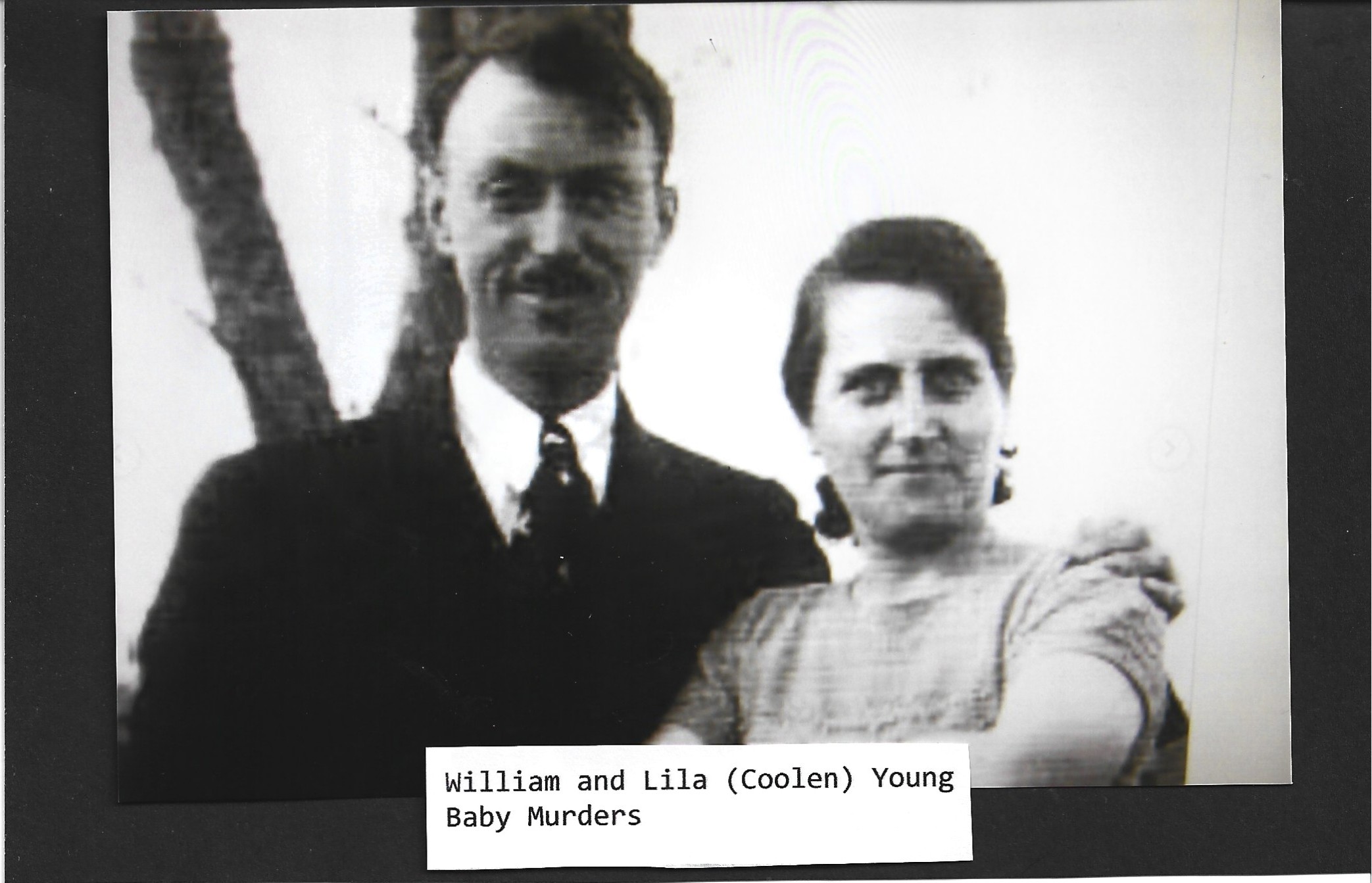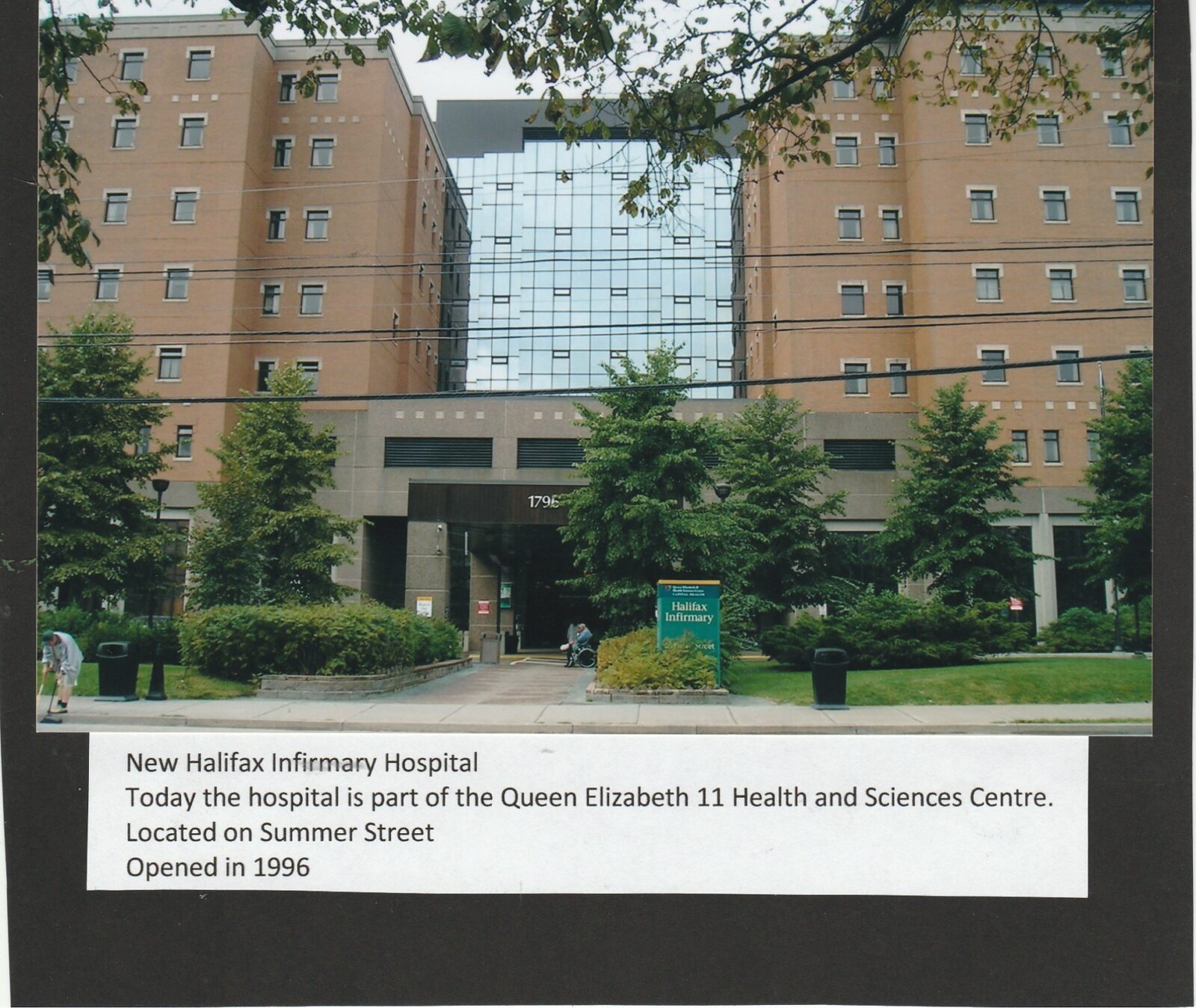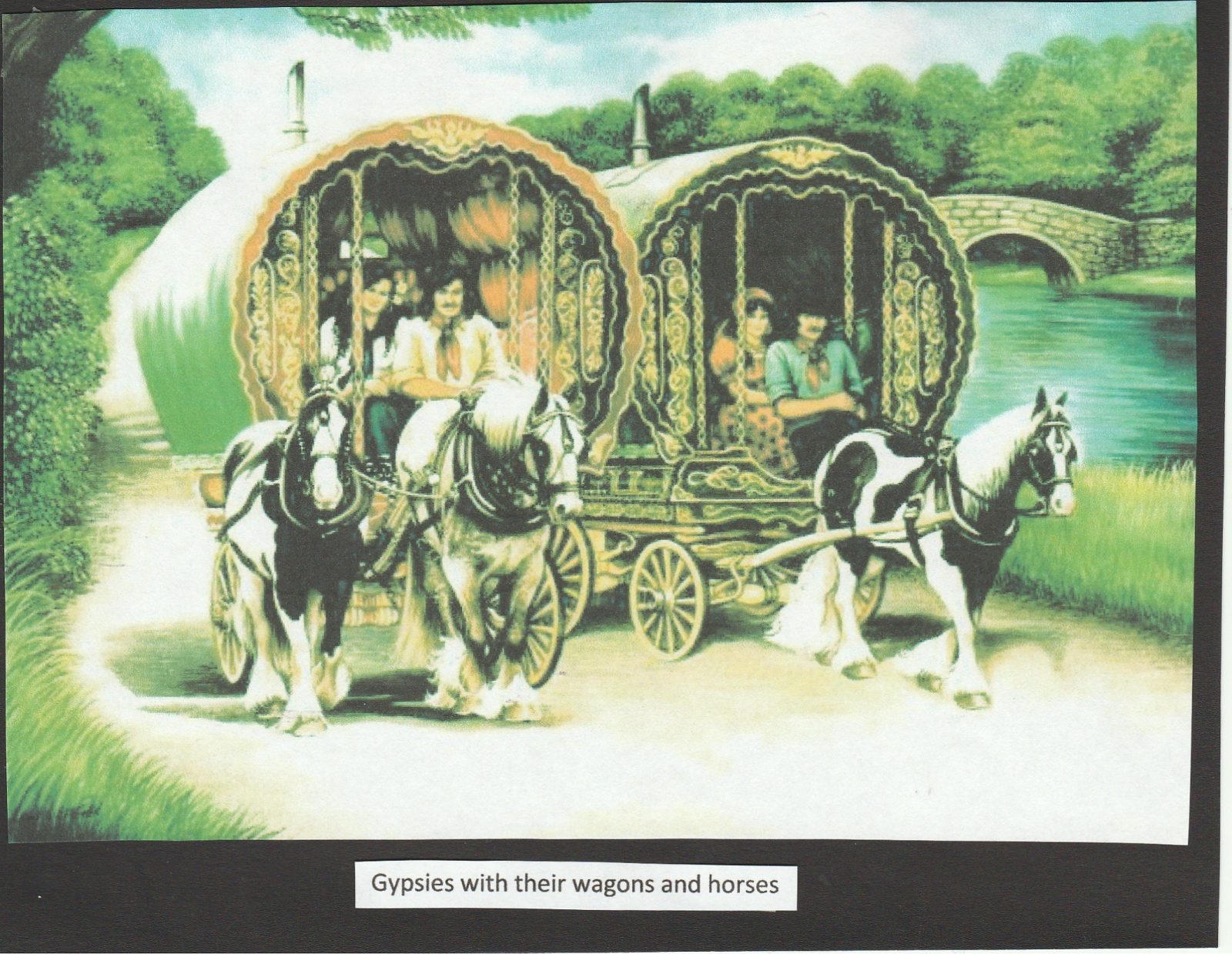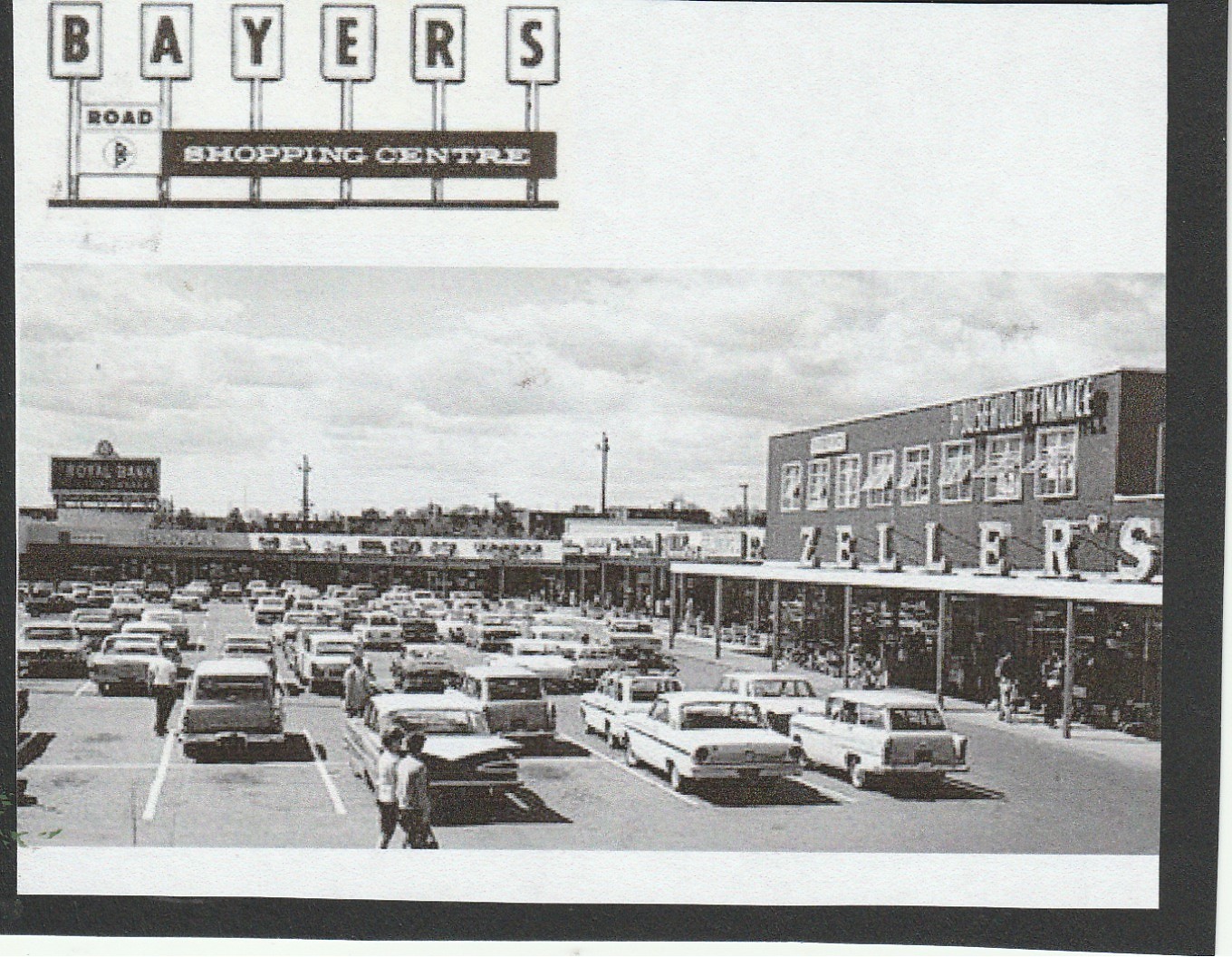Fairview
Historical
Society
HALIFAX, NOVA SCOTIA
Preserving The Past…
Promoting The Future
Local Authors
We are very lucky to have such talented and dedicated authors who spend countless hours researching and writing about our history.
Of Interest…

Honouring Our Veterans!
Veteran’s banners are up!
The forty veterans, 40 Fairview Veterans, including one Wren (Women Vet) and two Merchant Marine Vets, can be viewed on Main Avenue from Dutch Village Rd. up past the legion on Hillcrest St.
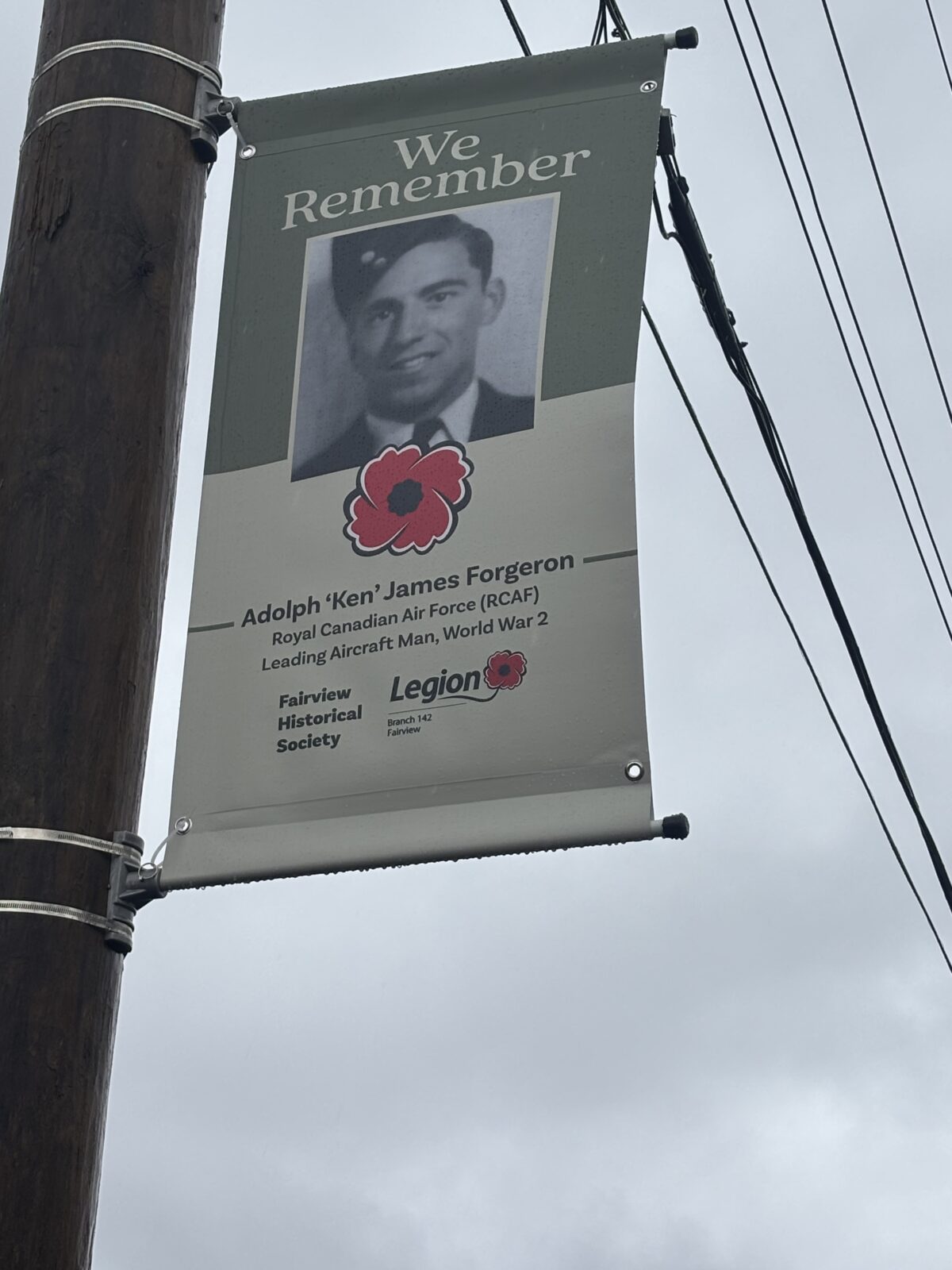
“Lest We Forget” The Fairview Historical Society
Honours Fairview Veterans With Banners Along Main Avenue
In the fall of 2024 the Fairview Historical Society decided to embark upon a project that has never been done before in the Community of Fairview. It involves 20 Banners with pictures of 40 World War 1 and World War 2 Fairview Veterans. These Banners will be double sided on 20 lamp posts starting at Titus Street and continuing up Main Avenue and will stop at the Fairview Legion. Due to the Banners being double sided, the viewer will be able to see one picture of a Veteran going up Main Avenue and another picture of a Veteran going down Main Avenue.
The Veteran Banners will be installed two weeks prior to Remembrance Day Nov. 11 and will remain until two weeks after, where they will be removed and stored for next year. As mentioned previously, these Banners will hang proudly displaying 40 Fairview Veterans, including one Wren (Women Vet) and two Merchant Marine Vets who are not in uniform as none was issued to them.
We the Fairview Historical Society takes great pride in presenting such a Historical project to the Community of Fairview and especially to the relatives of the Fairview Veterans. How proud we all will be, come this Remembrance Day!
Don Edwards
President of The Fairview Historical Society
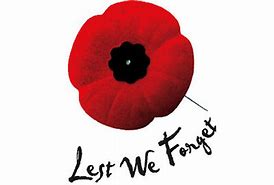
Launching Of The Veteran Banners
As mentioned earlier forty Fairview Veterans are ‘now’ on double sided banners featured on lampposts along Main Avenue in Fairview.
Our Society wanted to honour these Veterans in an extra special way. On Nov. 2nd we hosted the families of the Veterans at the Fairview Legion. Even though the Veterans are flying high along Main Avenue, we wanted to honour each and every one of them in what we liked to call, “The Launch of the Banners”. The families did not disappoint, as they showed up in droves almost 200 in all.
They were treated to a wonderful lunch compliments of the Fairview Legion and catered by the President himself Brian Forbes. It was brought to our attention that we had a special lady in the audience, Hermine Keefe, widow of Veteran Elmer Keefe. Hermine, who is well on the upside of the 90s and still going strong. An amazing Fairview women and we thank you so much for gracing us with your presence and helping as honour your late husband Elmer.
After lunch we had some special guests take the microphone. First up to was Holly Kelly, daughter of Fairview Veteran John Bently O’Brien. Holly wrote a poem entitled, “Memories” and it was so befitting the life of her father and the hell he went through and witnessed. She did a masterful job navigating her way through the different passages in the poem and a very appreciative audience responded as such.
Shortly thereafter another guest, the great story teller himself John ‘Nonnie’ O’Brien Jr., son of Veteran John B. O’Brien took the mic. He talked about his dad’s exploits during the war. It was an amazing and funny story which was enjoyed by all.
After a bit of time lapsed, it was time for Jim ‘Chissy’ MacKenzie to take the stage and talk about his dad Veteran James MacKenzie. Chissy’s story was humorous and showed a side of his dad that he did not know existed until he, himself enlisted in the Army. The audience loved his talk and the applause showed it.
Last but not least, Bruce Hubley took to the mic. to talk about his dad Veteran Russell Hubley. Bruce had actually written a book about his dad’s exploits during the war and he shared a few passages with a much appreciative audience.
In between guest speakers, we honoured each Fairview Veteran by having a family member come to the stage where they had their picture taken holding a copy of their mom or dad’s photo of the replica banner on Main Avenue. At the same time, the announcer called out full name, rank and branch of service of each. We continued until all 40 Veterans were recognized in the above fashion. Finally at the end a wonderful applause was extended forth by a much appreciative audience.
It was an amazing afternoon of a gathering of old Fairview, friends and neighbours, some who have not seen each other for almost 40 years or more. ‘A great time was had by all!’ It was like old home week and you know the FHS has a knack for doing such things.
We were so pleased to host the families and to honour the Fairview Vets. Take a drive or walk down Main Avenue and view the honoured Veterans Banners which will remain up until two weeks after Remembrance Day.
President Don Edwards
We the Fairview Historical Society would be remiss if we did not mention the sponsors, who without their help these Banners would not have been possible.
- Minister Barbara Adams – Military Relations Province of Nova Scotia
- Veterans Affairs – Government of Canada
- Councillor Morse – (HRM) District 10 Fairview/Clayton Park/Rockingham
- Fairview Legion – Br. 142
- Mickey MacDonald – The Micco Group.
Honourable Mentions
Special mention to our Archivist Devonna Edwards, who was responsible for all the Wartime posters that were on display for all to see. The 40 replica photos which were given to a family member at the end of the proceedings were the work of Devonna. She’s not one to stand up and take credit, so we the Society say a heartfelt ‘Thanks to Devonna, Wonderful job as usual’.
Also special ‘Thanks to Dan Campbell’ our Member at Large and our Society Photographer, who we press into service when occasions like this arise. Dan was busy all afternoon making sure he got all the photo shots, that will eventually work their way on to our website in the near future. Dan you were faster and better than Hollywood Paparazzi!
Krista Tobin – Brand Designer with Micco Group did an excellent job on the Veterans Banners.
Barb (Sam) Boudreau – Hall Chairperson and Member at Large with the Fairview Legion was the driving force helping us to achieve our special day.
Also to the board committee members, and members at large, for all of their hard work in making this event a memorable one.
Special Request For Future Use.
If any members or viewers of our Fairview Historical Society have knowledge of Fairview Veterans that are not presently in use on our Banners. Please contact us at archives@fairviewhistoricalsociety.ca
Thank You
Photos of the Veterans Family Day will follow shortly.
A List of the 40 Fairview Veterans now displayed on Banners along Main Avenue in Fairview.
- Wilbert Billard
- Allen Campbell
- Harry Campbell
- Allan Cant
- Robert ‘Bob’ Cole
- George ‘Bill’ DeGruchy
- William ‘Bill’ Dickie
- William ‘Bill’ Edwards
- Ralph Faulkner
- William Faulkner
- Adolph ‘Ken’ Forgeron
- Murray ‘Tucker’ Fry
- William Gavin
- Theodore ‘Ted’ Hadley
- Lawrence Hartlen
- Stanley Hartlen
- George Hodder
- Russell Hubley
- Jack Jones
- John King
- Charles ‘Elmer’ Keefe
- James Longaphy
- Colin MacDonald
- Dorothy McEwen
- Gordon McEwen
- Justin ‘Judd’ McIvor
- James ‘Jim’ MacKenzie
- David Maillet
- Gerald Miller
- Stanley Noddin
- John O’Brien
- Gerald Pickrem
- Cyril Power
- Edward Power
- Victor Prudhome
- James Smart
- Chester Smith
- Frederick ‘Murray’ Smith
- Kenneth Stockdale
- Herman Wolfe
Fairview Historical Society Membership
Help Us Preserve The Past and Promote The Future
Your membership helps us achieve our goal of promoting the history and culture of our community. From bursaries for students from Fairview attending Halifax West, to historical luncheons and advocating for interpretive panels…and it’s only $5 per year!
To become a member of The Fairview Historical Society simply etransfer $5 to: archives@fairviewhistoricalsociety.ca
The Community We Love
Our Sponsors
We could do our good work without the help of our generous sponsors!

What’s The Story Behind The Picture?
Fairview, a community in Halifax (HRM), Nova Scotia. It is a unique and diversified community. And always has been. The history of the area and it’s people is worth the pen of a few authors. Start here…
Find out about the picture above!

Watch videos on YouTube of Fairview history.
Watch Them
Memories Of The Deal Family

Researched and written by V.C. Deal and presented by Wayne Kelly.
This 66 page PDF eBook is a true narrative of memories was compiled as a true tribute to the late Stanley and Gwendoline Deal.
This document is dedicated to the Deal’s many descendants.
Read It Here
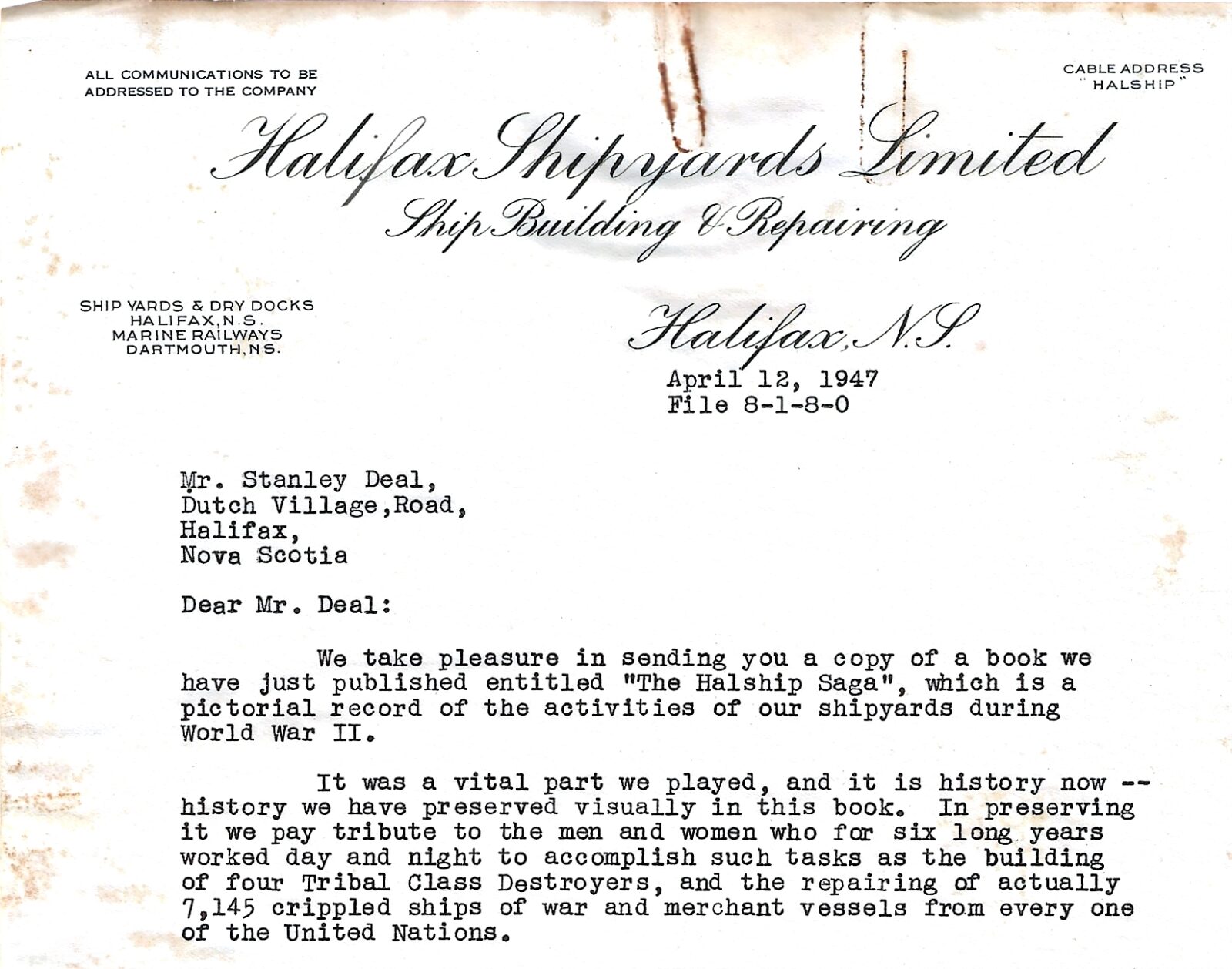
Letter written to Stanley Deal from the Halifax Shipyards in 1947 (PDF)
Read It Here
Articles written by archivist Devonna Edwards
World War 2 – Proud Canadian Men and Women’s Courageous fight for Liberty!
The first Armed Service to open its doors to women (other than the Nursing Sisters) was the Air Force. In July 1941 ‘The Canadian Women’s Auxiliary Air Force’ (CWAAF) was founded. The following spring it was renamed the ‘Royal Canadian Air Force’ (Women’s Division) referred to as the WD. While the women were not permitted to serve as pilots, over 17,000 women joined during World War 2 in jobs ranging from clerical duties, to drivers, airframe maintenance, air traffic control, weather observers, wireless operators, and parachute riggers, as well as many other jobs. They were disbanded on Dec. 11, 1946.
The East Chester Ideal Maternity Home:
“Less Than Ideal”- Murder And Babies For Sale On The Black Market!
The Ideal Maternity Home, also known as the East Chester Foundling Home was located in East Chester, Nova Scotia. It was ran by an unsavory couple by the name of William and Lila (Coolen) Young. William was the Superintendent and Lila was the managing director of the facility.
Lila Gladys Coolen was the daughter of parents who were Seventh-Day Adventist and grew up in Fox Point, Nova Scotia. She began her career as a teacher, but after marrying William Peach Young, they moved to Chicago. There he changed his profession from a un-ordained Seventh Day Adventist minister to a licensed Chiropractor and Lila graduated from the National School of Obstetrics and Midwifery.
The Grace Maternity Hospital – Where Life Began For So Many Of Us!
The Grace Maternity Hospital really began in 1906 as a rescue home, which the Salvation Army established on Tower Road in the south end of Halifax. The building was a former school, rather old and dilapidated and that is where the Salvation Army opened a safe haven for ‘fallen women’. The home was known as Harrow House and it gained an excellent reputation for maternity care and many physicians donated their time to what was perceived as a very worthy cause. From its inception it provided a space where unmarried girls could go to have their baby, but after World War 1 it also provided for private patients who were admitted by their doctor. At this time nearly every newborn in Halifax and Dartmouth was born at home, which could be dangerous if complications developed.
Jim Beckman’s Memoires
My name is Jim Beckman, I was born in Halifax in 1938 and lived all my life in Fairview until 1957. But first, I want to thank Don and Devonna Edwards for all the research they have done in our little village. I did not known either of them, but in their research, they came across my name as an athlete from Fairview. From their research they recommended me for adoption into the Nova Scotia Sports Hall of Fame. As a result of their recommendation and follow up, I was elected to the Hall of Fame. It was my second induction to the Hall of Fame as I previously had been elected as a member of the Windsor Maple Leafs hockey team of 1964
Halifax And Its Chaotic Chinese Connection

The first Chinese immigrated to the west coast of Canada in 1858 to help work on the Canadian Pacific Railway. Although Chinese labourers, not immigrants were known to come here earlier for work, they always returned to China when the job was finished.
Early Chinese presence in Halifax began in the 1890s when Chinese male workers came looking for any type of work and found jobs mostly in the service industry.
Fairview Secret Uncovered “Mink Ranching”
While reading the Halifax City Directory for the year 1930, I was surprised to see listed, “Maritime Fur Farms Ltd.” located on Dutch Village Road in Fairview. Curious to find out more about this farm I contacted Ken Bell, Champion Curler and winner of the Canadian Sailor Award and also a long time resident of Fairview. His memory is remarkable, as a child he lived in a house on the corner of Dutch Village Road and Bayers Road in Fairview before moving to Sunnybrae Avenue. He confirmed that there was a mink Farm there at one time.
Lost in Time: Two Magnificent Mansions “Belle Vue” and “Clairmont”
Both the Bellevue and the Clairmont were located in the north-end of Halifax opposite each other. The Bellevue was located on the north-west corner of Gottingen and North Streets and the Clairmont was located on the north-east corner of Gottingen and North Street. Belle Vue sometimes called Bellevue, should not to be confused with another estate on Spring Garden Road with the same name.
The Old Lamp Lighter of Long, Long Ago
In earlier years the streets in the city of Halifax were very dark at night and crime became rampant under the cover of darkness. A few people that owned corner shops had oil lamps fixed over their door to shed a bit of light. Coal gas lamps were installed on streets in the center part of Halifax City in 1843, replacing the seal and whale oil lamps that were there prior. Whale oil took a huge toll on whales and some species were driven to the very brink of extinction, electric street lights replaced these in 1886.
The Fuller Brush Man of Nova Scotia

In the 1950s the Fuller Brush Man was a frequent visitor to every home in the Fairview Area. I was just a young girl and living on McFatridge Road at the time, but I remember his visits well. He would arrive carrying his black suitcase filled with all kinds of brushes to sell. After being invited in he open the suitcase and began his sales pitch, while showing all his product. At that time most women didn’t work outside the home and were ‘stay at home’ housewives with many children to look after, so it was difficult to shop outside the home.
Moirs Chocolate Factory and Ben’s Bread Ltd.

The business began as a bakery that Alexander Moir, a Scottish emigrant opened on the corner of Duke and Brunswick Streets in the 1790s. He suppled bread to troops at the Fortress on Citadel Hill. By 1815 his son William took over the business and it soon became the town’s largest bakery, making bread for Haligonians as well as for the British troops stationed at the Citadel. In 1862 the bakery expanded to include biscuits and a new five storey building was built on the same site.
The Halifax Infirmary
Where it all began with some haunting along the way!
The first Archbishop of Halifax, the Most Reverend William Walsh, D.D., established the Sisters of Charity within the Halifax Diocese. The Sisters of Charity opened a home for aged women called “Our Lady of All Souls.”
This building was formerly known as the Old Waverley Hotel, located on the southwest corner of Barrington and Blower Streets. Originally the structure had been the former three-storey family home of Chief-Justice Sampson Salter Blowers, a loyalist who had move to Halifax in 1783. The Sisters had to raise money to pay the rent so they held many bazaars.
“LEST WE FORGET” Fairview Boy Gives His Life For His Country!
Ralph Douglas Faulkner grew up in Fairview at 45 Main Avenue (formerly Duke of Kent Street). He was born in February 1922, the fourth of seven children to parents John and Evelyn (Evy) Gertrude Faulkner. While leading a very active life in sports, playing hockey, golf and softball, he also loved to sing and play guitar. Hank Snow, who became a famous singer, was his inspiration and since Hank’s future wife Minnie (Aalders) lived just down the road from him on Main Ave.
An Elephant’s Journey
In July 1967 a beautiful bull elephant named Balakrishnan was shipped from Bombay, India to Halifax as an advertising gimmick for the Anil Hardboard Plant (Anil Canada Ltd.), which was an Indian-financed factory in East River, Lunenburg County. East River is on Highway no. 3 between Hubbards and Chester.
Infectious Disease Hospital Once Located Near The Shores Of The Bedford Basin
In 1870, a small hospital was built by E.H. Keating about 350 yards (325 metres) to the west of Rockhead Prison in the north end of Halifax. It was situated on the north- slope, close to the shores of the Bedford Basin and near Africville. It was first called The Smallpox Hospital, but it was also known as The Infectious Disease Hospital, then as The Rockhead Fever Hospital.
The Halifax Club – Murder, Deceit and Ghosts
The Halifax Club was established in January 1862 on Hollis Street in Halifax and holds the title as being the first private social club in Halifax. The club’s building stands in the same location today as it did in 1862 and still remains in operation. It began when fifteen distinguished gentlemen of wealth and influence met in the Hollis Street office of Robie Uniacke.
These powerful men belonged to a close knit group whose reach extended all over the world due to their involvement in finance, politics, military and religion…
Hero or Villain- The Halifax Public Gardens and its Secret!
Our beautiful Public Gardens guard so many secrets inside its rod iron pickets, including one in the southwest corner near the gate at the corner of Spring Garden Road and Summer Street. There in front of a London Plane tree is a plaque in memory of Lieutenant Henry Edward Clonard Keating, son of Edward Keating who was the City Engineer for Halifax in 1872.
“Hot Roasted Peanuts, Five and Ten Cents a Bag!”
In a small island off Metilin, Greece a determine young man by the name of Giovanni Mauverius made a startling announcement which shocked his mom, dad and eleven brothers and sisters,
“I am going to the United States of America.”
At first his parents tried to discourage him from going, but finally agreed to Giovanni’s decision to leave home and his father agreed to lend him money to go, so in 1905 Giovanni journeyed by boat to New York City.
Halifax’s Poor Houses of the Past
A Poor House is described as a government-run establishment to support and provide housing for the dependent or needy, in early years these people were known as Paupers. Other names for Poor House were Workhouse, Bridewell , Almshouse or Asylum.
NO WHERE TO RUN! NO WHERE TO HIDE!
On that eventful day nine year old Annie Perry Campbell left her home on 93 Kenny Street heading to her fourth grade class at Richmond School, which was located just behind her home. Annie’s mother Isabella died in 1908 while giving birth to Annie and her twin sister Jean; her two other siblings were…
The Fishermen Rowing Crew of Halifax 1876
The advent of competitive rowing had its beginning in Halifax in the 1800s when incoming ships needed harbour pilots to guide their vessels safely into the harbour. The harbour pilots at that time all used oars to direct their boats and when an incoming ship arrived on the horizon they vigorously paddled out to the ship, because the first boat to reach the incoming ship got the job of piloting the ship into the harbour and subsequently the pay that goes with it.
Clayton Park and Clayton Park West
It all began in 1902 when William Clayton bought 105 acres of land on the Bedford Highway between Fairview and Rockingham, extending up the southern slope of Geizer’s Hill, today known as Main Avenue and Washmill Lake Drive.
He built a beautiful summer residence there in 1904 near where Bayview Road and the Bedford Highway are today. He moved in with his wife and his two children Mary Louise and Reginald.
Old Popular Dance Halls on the St. Margaret’s Bay Road
Dance bands or orchestras were especially popular from the 1900s until the early 1960s. All communities had at least one dance hall and always featured live musicians. Dance halls were very busy on the week-ends and drew crowds of people who loved to dance.
It didn’t matter to people that these halls on the St. Margaret’s Bay Road were a fair distance, the good time had by all was well worth the drive.
The Romani People (Gypsies) and Christmas
Many knew the Romani people as “Gypsies” but they preferred to call themselves “The Roma.” Romani people originated from Northern India. Years ago they camped in tents and wagons travelling in caravans with their horse and wagon, wandering from place to place having no fixed address.
Over the centuries they have been misunderstood, subjected to discrimination and persecuted. In “The Second Word War” between 500,000 and 600,000 were exterminated by the Nazis and today there are still reports of hate crimes and attacks on Roma communities.
Tales, Ghostly Pirates and Buried Treasure on Historical Islands in the Bedford Basin! Part One

The island is located on the eastern side of the Bedford Basin on the Dartmouth side, near the Dartmouth Yacht Club and is approximately four acres in size.
The first inhabitants of the Island were the Mi’Kmaq and the nearby cove known as Wrights Cove formerly known as Stevens Cove.
Read More
Tales, Ghostly Pirates and Buried Treasure on Historical Islands in the Bedford Basin! Part Two
The island is located on the north eastern side of the Bedford Basin near Long Cove, named as such because of the many spruce trees occupying the island. In later years it was called Queen Mary’s Hat because from a distance the island resembled the flowered hats worn by the Queen Mother. The island had many occupants since 1750, such as Magdelena How, the Honourable J. Butler, the Great Eastern Sardine Company and businessman Fred George who purchased it in 2015.
Read More
The Dominion Store and Bayers Road Shopping Centre
In 1953 Samuel Butler, president of Butler Brothers Limited, bought a large piece of property along Bayers Road for $27,000. Later he sold off a few lots, four acres to the Dominion Store for $105,000 and a corner lot to an oil company for $40,000.
Butler Brothers Limited was a Real Estate and Construction Company who built the Bayers Road Shopping Centre, the first shopping mall in the city of Halifax.
Read More
Mount Saint Vincent By-the-Sea
What a vision of grandeur it was!
How the Sisters of Charity built a Motherhouse and established a boarding school in the fall of 1873. In the early days, the Motherhouse of the Halifax Sisters of Charity was Saint Mary’s Convent located on Barrington Street.
Read More
The Doukhobors, Lawlor’s Island and Disease
In January 1899, the SS Lake Superior arrived in Halifax Harbour with 2,000 Doukhobors aboard. The ship was flying a yellow flag, which signifies that there was disease aboard. When the Quarantine Officer went to check out the ship, he was told that an eight year old child had died of smallpox and was buried at sea.
Read More
Operation “Fish”

Halifax’s Involvement in One of the World Best Kept Secrets.
During World War 11 Britain sent all its gold to Canada for safekeeping. A top secret mission began called “Operation Fish” with large amounts of gold shipped to Halifax before being transferred by train to Montreal and Ottawa.
Read More
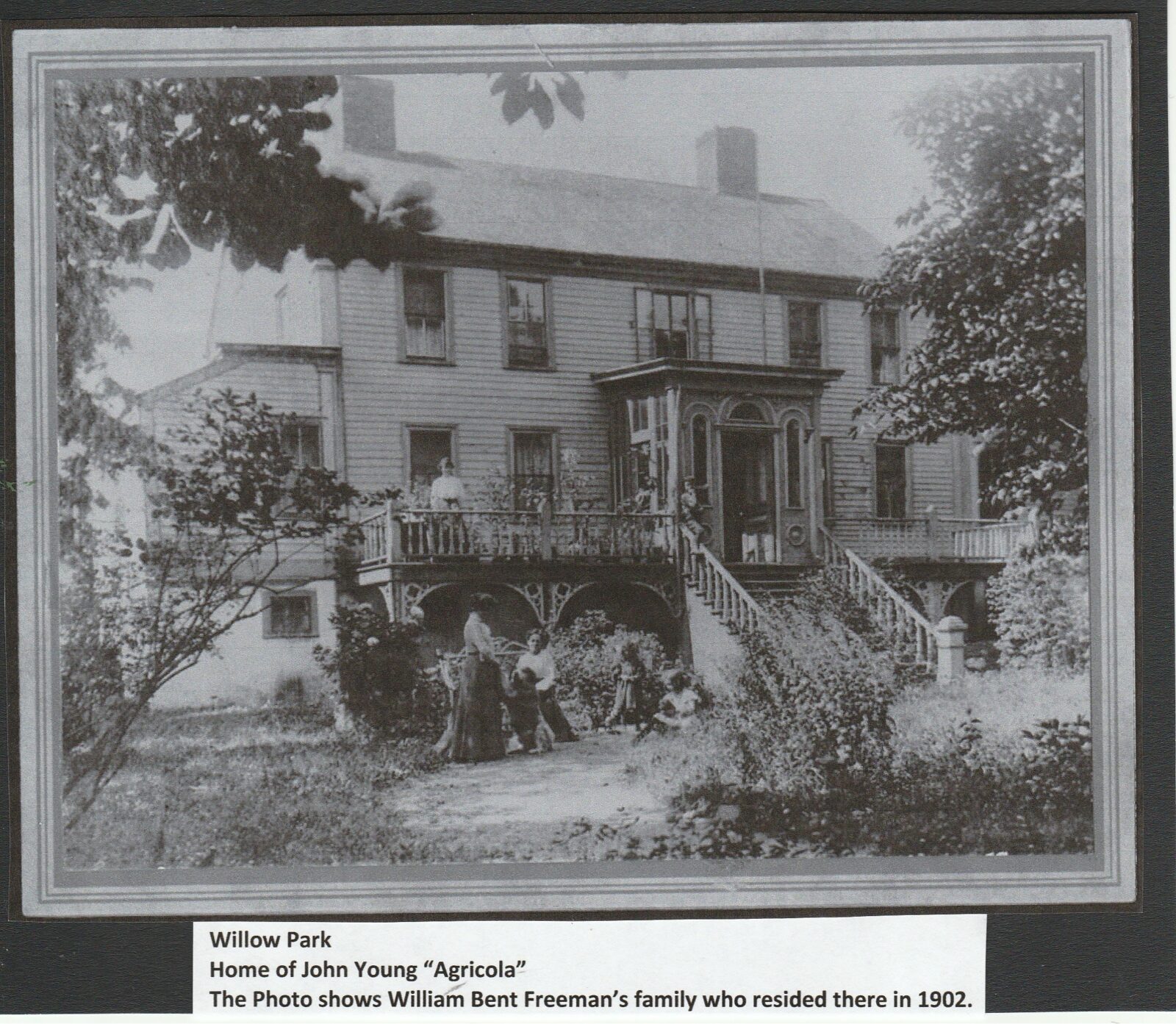
Native American Traditions revere the Willow Tree as a symbol of strength and stability in old age and experience, as well as a symbol of deep inner knowledge and open-mindedness.
The name “Willow Park” has a different meaning to various generations of Haligonians and can be quite confusing in regard to where it was located and what it stood for.
Read More
Round Em Up, Move Em Out! Yee Haw!

Yes, if you are thinking cattle, you are correct, lots of cattle and right here in North End (Richmond) Halifax. A little known fact is Nova Scotia’s participation on a large scale in long distance livestock trade. Cattle arrived by the hundreds, at first from farms throughout Nova Scotia, then later..
Read More
Grand-Mere’s Acadian Christmas

My Grand-Mere Mary Jane Angelique Broussard was born in 1891 in Upper Pomquet, Antigonish County in a house near Dragger’s Brook. The old house built by my great-great grandfather in 1867, still stands today. She grew up on a large farm in a close French Acadian community. Christmas at that time revolved around…
Read More
A Time Of Remerbrance

One of Many Tales of Disaster that Lay Beneath the Waters of the Bedford Basin
The tragic story of the ‘Erg’ started at the Halifax Shipyard where it was built in 1915. It was one of the earliest steel vessels built in Halifax and was owned by the Halifax Shipyard. The steam tug was at first named the Sambro and was described as being 55 feet long and 15 feet wide with a depth of 7 feet and had a maximum tonnage of 28.
Read More
Fairview Wins 2022 Brenton Cup In Quoits Tournament

n August of this year, the Historical Societies from Fairview, Rockingham, Bedford, Waverley and Sackville met at Historic Scott’s Manor House in Bedford for a Quoits Tournament.
In the final, Championship Game, Fairview beat out Waverley to claim victory and the Brenton Trophy. The trophy has quite a history in itself.
Read More
Memories of Old Time Halifax Covered Rinks

Prior to indoor rinks, ice skating and hockey were conducted on frozen ponds and lakes in the Halifax area. The Halifax Harbour and Bedford Basin in earlier years would freeze over and provide winter recreational activity. These popular activities on a gusty cold day, although enjoyable, could be unpleasant when frozen toes and fingers began to unthaw.
Briar Cottage and Briar Lane

Prior to indoor rinks, ice skating and hockey were conducted on frozen ponds and lakes in the Halifax area. The Halifax Harbour and Bedford Basin in earlier years would freeze over and provide winter recreational activity. These popular activities on a gusty cold day, although enjoyable, could be unpleasant when frozen toes and fingers began to unthaw.
Read More
Echoes of Long Lost Fairview Industries

In 1854 the building of the railway began at Richmond in the North End of Halifax, with two lines both under construction at the same time. The first railway completed was the Halifax to Windsor line in 1858, later that same year, the Halifax to Truro track was completed.
Read More
The Royal Naval Burying Ground also known as the Naval Cemetery, and the Battle of the HMS Shannon and the USS Chesapeake

In memory of seamen who were lost during the famous battle of the Shannon against the Chesapeake during the War of 1812…
Read More
Popular Old Inns Taverns And Hotels

Various taverns and hotels that were popular and well used…
Read More
Fairview Christmas Angels and the Angel Hair Tree

Growing up in the quaint little village of Fairview in the 1950s especially during the Christmas season, brings back precious memories…
Read More
Simpson’s Never Tells Eaton’s Their Business!

The Simpson’s and Eaton’s Department Stores developed a friendly but competitive rivalry through the years of operation. Both department stores had…
Read More
The Prohibition Era and Rum Running

The Temperance Movement brought about prohibition. Temperance members wanted to bring about the total abolishment of the “Evil Alcohol”. They believed…
Read More
Dutch Village Omnibus Line

The Omnibus was a large, enclose wheeled vehicle that was horse powered. It was used for passenger transport before the introduction of motor vehicles…
Read More
Thomas Garvey

Mount Olivet Cemetery can lay claim to having the oldest Canadian resident buried on its grounds…
Read More
Relief Camp at Citadel Hill

The Canadian National Railways (C.N.R.) and the Canadian Pacific Railways (C.P.R.) hired “bulls”(brutal guards) to make sure the trains carried only paying customers…
Read More
Three Special Fairview People

Read about three special Fairview people that made their mark….
Read More
Old Roads and Streets of Fairview

The history of the roads and streets in Fairview, past and present….
Read More
Nova Scotia Cotton Factory and The Factory Girls That Worked There

The Nova Scotia Cotton Manufacturing Company was a cotton mill located on the corner of Kempt Road and Robie Street in Halifax….
Read More
Fairview Legion Branch 142

The Fairview Legion is located on the corner of Hillcrest Street and Main Avenue. The idea to start a legion in Fairview all began in October of 1951 when…
Read More
How Bayers Rd. Got It’s Name

In the Halifax City Directory 1912 to around 1934 it stated that Bayers Road commenced at Oxford Street and ran west to Dutch Village Road…
Read More
Jones Hill

Located in Fairview, on Dutch Village Road (today that part of the road is renamed Joseph Howe Drive). Jones Hill was a large hill on property owned by…
Read More
Monument To Unidentified Dead

On one of the mass graves of the unidentified dead, there is a monument. It is at the rear end of the Fairview Cemetery, close to Bayers Road…
Read More
Wartime Rationing 1939-1945

A 1940s newspaper advertisement for War Saving Stamps depicts a housewife dishing up supper to her children. The youngsters smile with enthusiasm as the mother declares to the readers…
Read More
Through The Gates Of Hell And Back

John O’Brien relates: “Our ship moved out to sea, behind the main convoy that carried our Regiment and others of the First Canadian Division. On the third day out the loud speaker announced we were on our way to attack Sicily”…
Read More
Ashburn Golf Club

The course was played by Babe Ruth, Canadian Prime Minister Jean Chretien, U.S. President Bill Clinton, Gordie Howe and professionals…
Read More
Andrew Downs Zoological Gardens

The Zoo was located on Dutch Village Road, today known as Joseph Howe Drive. Andrew Downs was a naturalist, taxidermist and zoologist who…
Read More
Memories Of Three Fairview Seniors

The interesting lives of three Fairview seniors, Lorraine (Daine) Rozee, Ann (Veniotte) Tattrie, John Hurst…
Read More
The Mi’kmaq (formerly known as Mic Mac) In The Fairview Area

Chief Lonecloud married seventeen year old Elizabeth Paul and they had four daughters and two sons. Lonecloud’s father Abram, joined the Union Army when the Civil War began…
Read More
Fairview People Gone But Not Forgotten

“Oscar Sandoz did not do espionage”
There was a rumour among some people in the Fairview area, during World War Two, that…
Read More
Dairy Farms

Dairies listed in the City Directory for 1909 in the Fairview and surrounding areas…
Read More
Old Churches Of Fairview

Read about the history of Fairview churches past and present…
Read More
Earlier Schools in the Fairview and Surrounding Areas up to The Present Day

Many would have gone to, and are going to, this comprehensive history of Fairview schools past and present…
Read More
Halifax Municipal Airport – Also Known As Chebucto Road Airport

In the newspaper dated September 1928, it announced that the Bluehill Farm property was chosen for the site of the new Halifax Municipal Airport…
Read More
No 6 District Depot (Chebucto Barricks)

The Depot opened in November 1941 on the northern section of the Municipal Airport Field which was then undeveloped land. Today that area is known as…
Read More
The Blue Caps Women’s Softball Team – Fairview 1930s

The Blue Caps Women’s Softball Team was composed of 15 year old Fairview girls. At home, they played on…
Read More
The Provincial Penitentiary

It was located one-half mile from the city of Halifax, on fourteen acres of land overlooking the eastern shore of the North West Arm…
Read More
Rockhead Prison – Also Known As City Prison

The prison was located one mile north of downtown Halifax, on a high hill above Africville and overlooking the Bedford Basin…
Read More
Devlin’s Pond in Fairview and the Polio Epidemic in the early 1950s

Devlin’s Pond was located on Melrose Avenue; between Melrose Avenue and Sunnybrae Avenue in Fairview, just below Alex Street…
Read More
The Old Tannery and Area
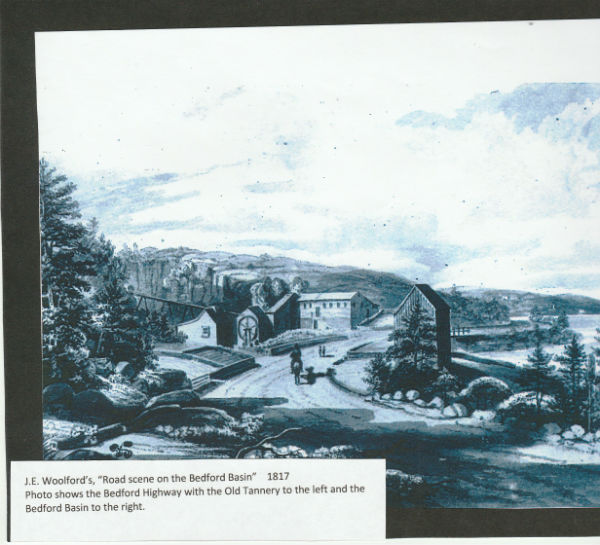
The Old Tannery was located three miles from Halifax, on the Bedford Highway. A Rock Quarry occupied the site after the Tannery…
Read More
Plane Crash In Fairview, 1953

Two airplanes, a Sea Fury and an Avenger, collided over Fairview with a deafening roar on April 9, 1953…
Read More
Constable Charles Russell Fulton

Constable Charles Russell Fulton, was Halifax Police Department’s first police officer killed in the line of duty…
Read More
St. Patrick’s Boys Home

Located on Mumford Road. The first St. Patrick’s Home for boys opened on October 2,1885 on the old Murphy homestead, known as…
Read More
Geizer’s Hill or Geizer’s Mountain

Today the areas location is described as the top of Main Avenue and Washmill Lake Drive. Years ago the lower part of Main Avenue was known as…
Read More
Susie’s Lake and Quarry Lake

Many will remember hiking back to either of these lakes for a swim on a hot summer day. Years ago, before the Bi-Highway was built…
Read More
Both Fairview Signs Now Up

The long awaited “Welcome to Historic Fairview” sign is now up by Shoppers Drug Mart on Dutch Village Road.
Read More
Fairview Middlemore Home

Located in Fairview on the Bedford Highway. It was situated on a high hill next to the Rock Quarry (now a car dealership occupies the site).
Read More
British Home Children Monument

Over 130,000 British Home Children were brought from England to Canada as Child Labour between the 1860’s and the 1940s.
Read More
Flooding Of The Fairview Underpass

The Fairview Underpass and surrounding area endured many years of flooding. The Underpass formerly referred to as the Fairview Bottleneck was…
Read More
The Fairview Post Office

The Fairview Post Office was located on the corner of Main Avenue and Titus Street. Today a KFC occupies the site. In 1931 Bert MacDonald’s family…
Read More
Deals Of Fairview

The Deals were among the very first settlers who came to the Dutch Village (Fairview) in 1751. Dutch Village was originally called “Deutsch Village…
Read More
Gold in the Hills of Fairview

Alexander Taylor strikes it rich on Geizer’s Hill (Main Ave.) at the Dutch Village (Fairview).
Read More
Fairview Volunteer Fire Department

The Fairview Volunteer Firefighting Unit began in 1940 during the Second World War with the establishment of the Air Raid Patrol (A.R.P.)…
Read More
Fairview Senior Volleyball

In June of 2016, the Fairview Aces Senior Volleyball Team of 1954-1965 was inaugurated to the Maritime Sports Hall of Fame….
Read More
W. D. Piercey

William Drysdale Piercey was born in Dutch Village, Halifax County, Nova Scotia on June 9, 1877, son of Charles E. Piercey and Eleanor Jane Drysdale…
Read More
Peninsula Road and Blockhouses

The Peninsula Line of Defence was a chain of outposts on the isthmus separating the Halifax peninsula and…
Read More
Titus Smith Jr.

In order to tell the whole story about Titus Jr. I have to talk about his equally interesting father- Titus Smith Senior…
Read More
Bayer’s Lake Mystery Walls

A dry-stone wall (no mortar was used in its construction) was discovered several years ago during an expansion of…
Read More
Duc d’ Anville’s Armada

Duc d’ Anville’s Mighty French Armada sailed into the Bedford Basin in 1746 lookin for revenge of the loss of Louisburg.
Read More
The Bedford Basin

The Bedford Basin, known for it’s convoys, has seen explosions, log jams, even a number of sea monster sightings…
Read More
Fairview Cove and Bert Cooper

Fairview Cove was a beautiful place before the government railroad cut up the area for its tracks in the 1850s. The Cove remained a popular swimming spot…
Read More
The Railway and Fairview

The Railway played an important part in Fairview’s history not only visually but years ago, many people who lived there depended on it for their livelihood.
Read More
The house was only half finished; there was no indoor toilet and no running water. Water was obtained from a brook about 500 ft. from our property. Dad had made arrangements for a neighbour’s son to get two buckets of water for my mother every day. I was too small to carry the buckets and my mother was pregnant.
Submitted by: Wally Snow
Read More
Lightin’ Hill Gang
The Lightn’ Hill Gang was the most infamous, nefarious, dangerous and fightingness (if that is a word) gang of individuals in the history of Fairview!!!!!! Have your attention yet? Who were the members of this notorious, dastardly, Lightn’ Hill Gang anyway and where was Lightn’ Hill located in Fairview?
Submitted by: Danny Campbell
Read it here
Campbell House
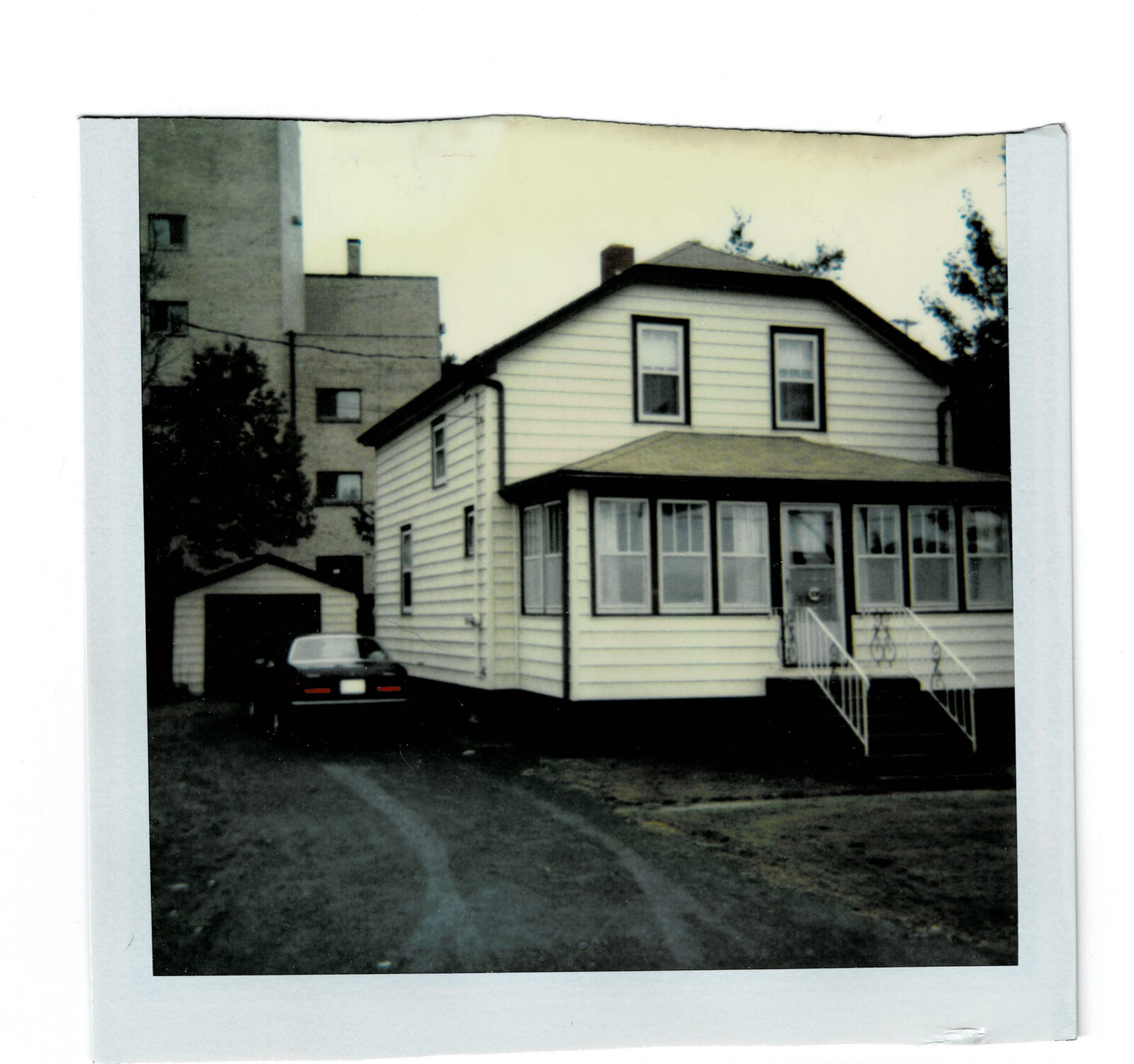
Campbell house was built in the early 1940’s, purchased and owned by Mrs. Ellen Campbell. The civic address, at the time, was 406 Dutch Village Road. (presently 3818 Joseph Howe Drive) It is the last house still standing on the Bedford Basin end of original Dutch Village Road. (the area where the original Howe Avenue met with Dutch Village Road leading to the Bedford Highway.
Submitted by: Danny Campbell
Read it here
Fairview Youth Centre And The Fairview Phillies 1970

John O’Brien, owner of O’Brien’s Pharmacy, was the backbone and the reason for the Centre’s existence. He was an original Founding Member of the Fairview Legion and it was through his intellectual prowess and sincere want for youth participation that kept the Youth Centre on its course of success.
Submitted by: Don Edwards
Read it here
Suburban Hockey League

The longest running hockey league in North America, The Suburban Hockey league, all started on Deal’s Pond in 1927. The pond was located behind the old Henderson’s store on Dutch Village Rd. and players from all over Halifax, Dartmouth and other areas would come to play. The competition became so popular that they decided to have a league that would allow all players from different areas of the city to play.
Submitted BY: Don Edwards
Read it here
Fairview Little League

In 1970 Little League Baseball made its debut in Fairview and it was a very exciting day for players, coaches and fans.
Submitted BY: Don Edwards
Read it here
Christmas In Fairview – 1961

Around the end of September, the first words uttered when home from school, were “did it arrive yet”? “After supper when your homework is done, you may look at it” was the normal response from my mother. A bright shiny cover, lots of toys in color, page upon page of new and familiar items.
Submitted by: Peter Wolfe
Read it here
Fairview Wins NS Junior Hockey Championship

It was the inaugural Nova Scotia Junior “D” championship. We were playing in a Junior “C” league in Halifax. There was no Nova Scotia Junior “C” championship so they the winner of our league was put in the Nova Scotia Junior “D” championship.
Submitted by: Rupe Power
Read it here
Fairview Convenience

One of my fondest memories as a kid was finding a pop bottle or getting one from the old man that he brought home from work. I would run over to the store to buy some candy, or if I had enough money, a comic or hockey cards. There are still a few corner stores in Fairview but at one time there were a lot more stores, some more obscure than others.
Submitted by: Rupe Power
Read it here
Have a heritage or historical resource you would like listed here, please contact us.

